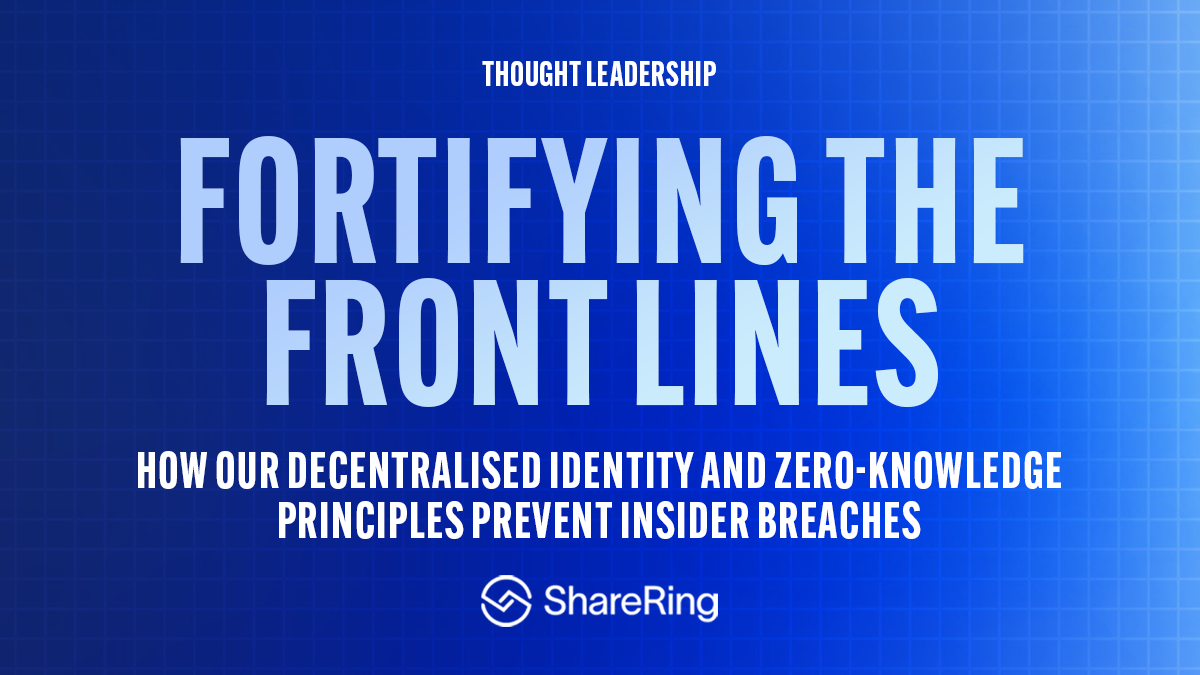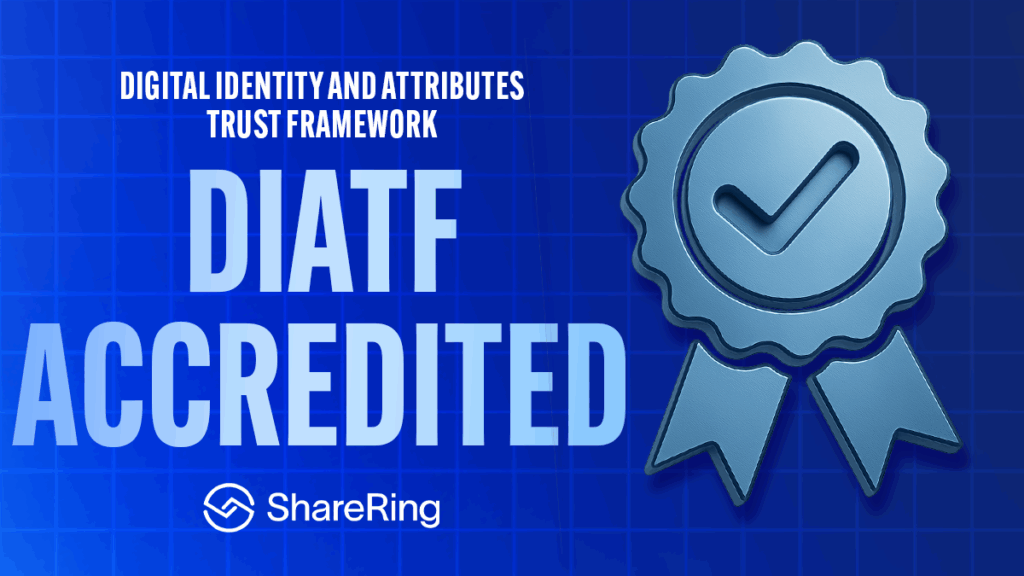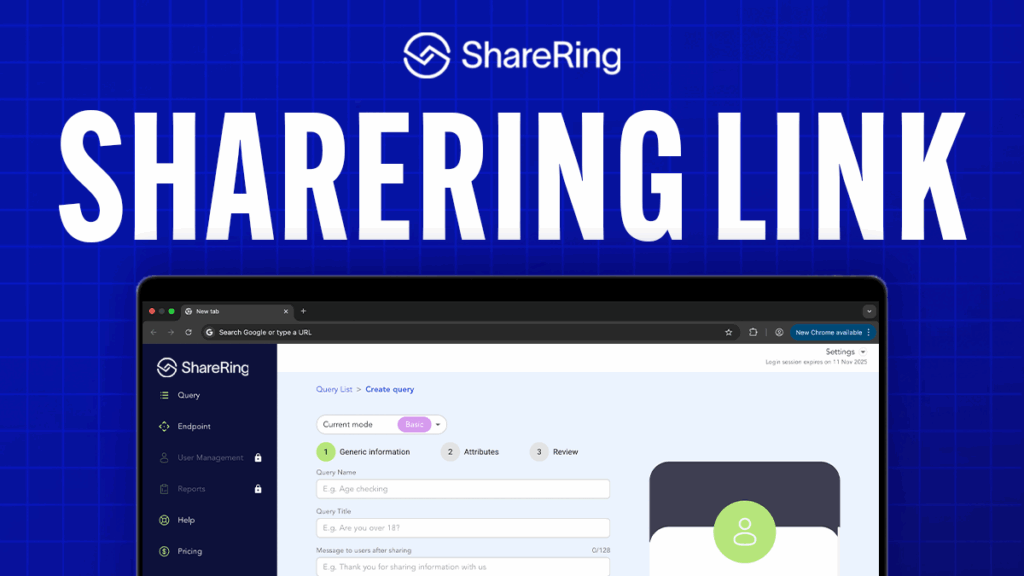I. Introduction: The Hidden Threat Within – When Trust Becomes a Target
In the ever-evolving landscape of cybersecurity, the spectre of external hackers often dominates headlines and defensive strategies. However, a more insidious and often underestimated danger lurks within organisations: the insider threat. Trusted individuals with legitimate access to sensitive systems and data can become conduits for catastrophic breaches, particularly when Personally Identifiable Information (PII) is involved. The consequences of such breaches extend far beyond immediate financial costs, eroding customer trust and inflicting long-lasting reputational damage. This internal vulnerability is not merely a theoretical concern but a stark reality that demands a fundamental rethinking of data security, especially in sectors handling vast amounts of customer data, such as financial institutions and cryptocurrency exchanges.
A potent illustration of this internal vulnerability is the Coinbase incident of May 2025. According to reports, cybercriminals successfully bribed and recruited a group of overseas support agents who possessed extensive access to customer PII.2 These insiders then abused their privileged access to customer support systems, exfiltrating account data for a subset of users. The attackers’ primary objective was to compile a list of customers they could then target with sophisticated social engineering campaigns, impersonating Coinbase to trick individuals into surrendering their cryptocurrency assets. This incident underscores a critical point: the attackers did not need to overcome complex digital fortifications; they exploited the human element, a vulnerability amplified by system designs that grant broad access to sensitive information.
The core vulnerability exposed by such incidents lies in the nature and accessibility of PII. When customer support personnel have direct, viewable access to a treasure trove of sensitive data – including names, addresses, phone numbers, email addresses, partial financial details, and even copies of government-issued identification documents – this creates an enormous and attractive attack surface. This PII is precisely what malicious actors seek, as it fuels identity theft, fraud, and highly convincing impersonation schemes. The Coinbase attack demonstrates that the initial value of this stolen PII was to enable credible social engineering attacks at scale, thereby undermining the foundational trust between the company and its user base.
Addressing this deeply entrenched problem requires more than incremental security updates; it necessitates a paradigm shift in how customer data is managed, verified, and protected. At ShareRing, our suite of technologies, grounded in Self-Sovereign Identity (SSI) and privacy-preserving verification mechanisms, provides a robust, proactive defense. By fundamentally altering how customer PII is handled, we at ShareRing are making breaches stemming from exploited insider access a relic of the past. The core tenets of our approach involve empowering users with control over their data, utilising one-way hashing for secure verification, and minimising the direct exposure of PII to internal staff. This is not just about preventing a specific type of hack but about re-architecting trust and security in digital interactions.
II. Anatomy of an Insider-Driven Breach: Deconstructing the Coinbase Scenario
The Coinbase incident of May 2025 is a critical case study, revealing the anatomy of an insider-driven breach and the cascading consequences that follow when PII access is compromised.
The Achilles’ Heel: Unfettered PII Access in Customer Support
The fundamental weakness exploited in the Coinbase scenario was the extensive access customer support agents had to sensitive PII. This data, including full names, physical addresses, phone numbers, email addresses, masked Social Security and bank account numbers, images of government IDs, and account balance snapshots, represents a comprehensive profile of each affected customer. Traditionally, support staff require such access for legitimate operational reasons: verifying a customer’s identity before discussing account details, assisting with account recovery processes, or resolving specific transaction issues. However, this operational necessity, when implemented without sufficient safeguards against data visibility, becomes a significant liability. The critical vulnerability is not merely access to PII, but persistent, viewable access to raw, decipherable PII by human agents, creating a direct pathway for potential misuse.
Exploitation Pathways: Bribery, Blackmail, and Social Engineering
Insiders possessing such comprehensive PII access inevitably become attractive targets for malicious external actors. These insiders can be subjected to various forms of coercion, including bribery and blackmail, to exfiltrate data. The Coinbase incident specifically involved cybercriminals offering cash to support agents in exchange for customer data. Furthermore, individuals with access to sensitive customer information may themselves be targeted by external threats for recruitment or manipulation, leveraging their privileged position to obtain regulated or high-value personal information. The human factor, therefore, emerges as a critical weak point, exploitable at multiple junctures if PII is readily exposed. This underscores that relying solely on vetting and training of support staff, while important, is insufficient if the system architecture itself grants overly permissive access to sensitive data.
The Aftermath: Data Theft for Sophisticated Impersonation and Account Takeover (ATO)
Once PII is exfiltrated, it becomes a powerful tool for subsequent attacks. In the Coinbase scenario, the attackers’ stated aim was to “gather a customer list they could contact while pretending to be Coinbase—tricking people into handing over their crypto”. This is a clear instance of an impersonation attack, where the malicious actor assumes the identity of a trusted entity (Coinbase) to deceive customers. Such attacks, often leveraging social engineering tactics, are designed to steal further sensitive data or induce financial transfers. The detailed PII obtained from Coinbase support systems would make these impersonations exceptionally credible, far surpassing the efficacy of generic phishing attempts.
While the primary attack vector described was the impersonation of Coinbase, the stolen PII could also serve as a stepping stone to
Account Takeover (ATO) ATO occurs when cybercriminals gain unauthorized access to a user’s online account using stolen credentials or by leveraging compromised PII to bypass authentication mechanisms or socially engineer users into revealing their login details. The rich dataset acquired by the attackers, including elements often used in identity verification processes, significantly heightens this risk.
The term “social engineering” is particularly relevant here, as it encompasses multiple facets of the breach. It applies to the attackers socially engineering the support staff through bribery, and subsequently, using the stolen PII to socially engineer Coinbase customers by impersonating the company. This multi-layered exploitation of human psychology and trust highlights the severe risks associated with exposed PII.
The Ripple Effect: Financial Loss, Reputational Damage, and Erosion of Trust
The consequences of such a breach are severe and multifaceted. Financially, organizations face costs related to customer reimbursement, regulatory fines for data protection violations (e.g., GDPR), investigation and legal expenses, and a potential decline in business valuation. Reputational harm can be even more damaging and enduring, with studies indicating it can take years for a company to rebuild its image following a significant data breach. For customers, the impact includes the direct risk of identity theft, where stolen PII is used to commit fraud, open unauthorized accounts, or for blackmail if sensitive personal details are exposed. Coinbase’s proactive response, including commitments to reimburse affected users and implement enhanced security measures, aimed to mitigate these damages, but the initial breach inevitably causes significant concern and erodes trust.
III. Our Vision at ShareRing: Self-Sovereign Identity for True Data Protection
To counter the vulnerabilities inherent in traditional, centralized data management systems, a new approach is needed—one that places control firmly in the hands of the individual. This is the core premise of Self-Sovereign Identity (SSI), a model we champion at ShareRing to deliver genuine data protection.
Introducing Self-Sovereign Identity (SSI): A Paradigm Shift
SSI represents a fundamental departure from conventional identity systems where personal data is typically stored and managed by numerous third-party organizations. Instead, SSI empowers individuals with full control and ownership over their digital identities and personal data, eliminating the reliance on centralized authorities or intermediaries. In an SSI model, users manage their identity credentials securely on their own devices, deciding when, how, and with whom to share their information. This decentralized approach inherently minimizes the risks associated with large, centralized databases, which are prime targets for hackers. The shift is more than technical; it’s a philosophical change in data governance, placing the user at the center of their identity ecosystem, as illustrated by the “Trust Triangle” of Issuer, Holder (the user), and Verifier.
Core Principles of SSI Relevant to the Problem
Several core principles of SSI are directly pertinent to addressing the challenges highlighted by the Coinbase scenario:
- User Control & Ownership: Individuals have ultimate authority over their digital identities and maintain unrestricted access to their own data. This contrasts sharply with models where service providers hold and control vast amounts of user PII.
- Data Minimization & Selective Disclosure: A cornerstone of SSI is the ability for users to share only the minimum necessary information required for a particular transaction or verification. Instead of exposing an entire PII dataset, a user might only confirm a specific attribute (e.g., “Is this person over 18?”) without revealing the underlying data (e.g., their full date of birth). This principle of “selective disclosure” significantly enhances privacy and reduces the risk of data misuse.
- Decentralization: By avoiding the concentration of data in single, massive silos, SSI reduces the attractiveness and impact of potential breaches. If data is distributed and controlled by individual users, there is no single point of failure for attackers to exploit.
- Cryptographic Security & Verifiability: SSI leverages technologies such as Decentralized Identifiers (DIDs) and Verifiable Credentials (VCs), often anchored to a blockchain, to ensure that identity information is secure, tamper-evident, and cryptographically verifiable.
Our Commitment at ShareRing: Architecting for Privacy and Security
Our platform at ShareRing is built upon these foundational SSI principles. A key aspect of our approach is our explicit commitment: “We Don’t Store Any Customer Data”. This declaration directly counters the systemic issue of centralized PII databases being accessible to potentially vulnerable internal staff. Our product suite, including ShareRing Link (for businesses), ShareRing Me (our user’s mobile identity wallet), and Share Ledger (our blockchain-based identity chain), is designed to facilitate secure, user-controlled identity verification. By adopting SSI, we not only prevent data breaches but also foster greater trust between individuals and service providers by giving users agency over their personal information, a factor that serves as a significant competitive differentiator in an increasingly privacy-aware world.
IV. The ShareRing Solution: How We Re-engineer Customer Support Verification
At ShareRing, we provide a multi-faceted solution designed to fundamentally re-engineer the customer support verification process, addressing the core vulnerabilities exposed in incidents like the Coinbase breach. Our approach combines our leading privacy-preserving technologies, user empowerment, and secure data management practices.
A. Blind Verification: The Power of One-Way Hashing (SHA-256)
A central component of our strategy at ShareRing for securing customer support interactions is the implementation of “blind verification” using one-way cryptographic hashes, such as SHA-256.
A one-way hash function like SHA-256 takes any input data (e.g., a name, address, or ID number) and produces a unique, fixed-length string of characters, often referred to as a “digital fingerprint” or hash. The critical characteristic of these functions is their irreversibility: once data is hashed, the original data cannot be practicably recovered from the hash value. This means that even if a hash value is compromised, the underlying sensitive PII remains protected.
Our customer support workflow leveraging this technology operates as follows:
- When a customer’s PII is initially collected by an institution like Coinbase (for legitimate compliance purposes), in addition to storing the raw PII securely (as discussed later), a SHA-256 hash is generated for each relevant PII field (e.g., hash of the customer’s full name, hash of their street address). These hashes, not the raw PII, are stored in the primary customer support system accessible by agents.
- During a customer support interaction requiring verification, the customer verbally provides a piece of information (e.g., “My registered email address is user@example.com”).
- The customer support representative types “user@example.com” into their system.
- The system, either locally on the agent’s secured terminal or via a secure backend service, immediately computes the SHA-256 hash of the entered string.
- This newly generated hash is then compared against the stored hash associated with that customer’s email address field.
- If the hashes match, the system confirms the verification.
Crucially, throughout this process, the support agent never views the original PII that is stored for any customer, nor do they even see the specific PII of the customer they are currently assisting if the system is designed to only return a “match” or “no-match” status. This is a practical application of zero-knowledge principles from the agent’s perspective: the agent gains the necessary knowledge (that the provided information is correct) without ever seeing the sensitive information itself. Our system ensures that support staff can successfully verify data without ever viewing it.
The primary benefit of our solution is a dramatic reduction in the risk of PII leakage or misuse by support staff. Since no viewable PII is present in their operational system, the opportunity for theft or inadvertent exposure is virtually eliminated.
B. Empowering Users: Our ShareRing Me App & Verifiable Credentials (VCs)
Complementing our hashed verification method, we empower users directly through our ShareRing Me mobile application and the use of Verifiable Credentials (VCs).
Our ShareRing Me app functions as a secure digital identity wallet, allowing users to store, manage, and share their verified personal credentials with privacy and control. This facilitates a user-centric verification process. Instead of relying solely on information relayed to an agent, support staff (or an automated chatbot) can initiate verification by sending a deeplink via SMS, email, or a messaging app, or by presenting a QR code on screen. When the user clicks the deeplink or scans the QR code, their ShareRing Me app opens, prompting them to consent to sharing specific, pre-agreed-upon VCs with the requesting institution for that particular interaction. This mechanism is adaptable to various communication channels, enhancing user experience while maintaining robust security.
VCs are the digital equivalent of physical credentials like driver’s licenses or passports. They are tamper-evident, digitally signed attestations of facts about a user (e.g., “Name: John Doe,” “Date of Birth: 01/01/1980”), issued by a trusted entity (e.g., a government agency, a bank, an educational institution) and held securely by the user in their ShareRing Me wallet. VCs enable selective disclosure, meaning the user shares only the specific credential or attribute required for the interaction, not their entire PII profile. For instance, to prove age, a VC could confirm the user is over 21 without revealing their exact birth date. This method shifts a part of the verification burden to the user in a secure and convenient manner, further reducing the need for support agents to handle or view raw PII and strengthening security through cryptographically verifiable proofs.
C. Balancing Security and Compliance: The Air-Gapped PII Vault
While privacy-preserving verification methods are paramount for day-to-day operations, financial institutions like Coinbase have non-negotiable regulatory obligations (e.g., KYC/AML, audit requirements) that necessitate the collection and storage of certain PII in a readable format. Our architecture at ShareRing accommodates this by enabling the storage of this sensitive, raw PII in a highly secured, air-gapped database.
An air-gapped database is one that is physically or logically isolated from unsecured networks, including the internet and the company’s main operational networks. Data transfers to and from such a system are strictly controlled, often manual, and meticulously logged. Access to this PII “vault” would be severely restricted, requiring multi-party authorization and reserved exclusively for legitimate, documented compliance activities, legal requests, or periodic audits—not for routine customer support queries. This approach acknowledges that some PII must be retained but ensures its attack surface is minimized by isolating it from systems and personnel involved in daily, high-volume interactions. It forms a critical part of a defense-in-depth strategy, treating the readable PII as a last resort for access, not a primary data pool.
These three components—hashed verification for support agents, user-controlled verification via our ShareRing Me app and VCs, and an air-gapped vault for compliance PII—work synergistically. Hashed verification protects PII from routine agent visibility; the ShareRing Me app offers stronger, user-consented cryptographic proof for more sensitive interactions or initial onboarding; and the air-gapped database securely maintains the source-of-truth PII, isolated from the high-traffic customer support environment. This layered approach systematically minimizes PII exposure at every stage of the customer interaction lifecycle.
V. Tangible Benefits for Coinbase and the Broader Financial Sector
Adopting our ShareRing identity verification framework offers substantial and far-reaching benefits, not only for an entity like Coinbase in preventing future insider-driven breaches but also for the wider financial services industry.
By implementing our measures, such as one-way hashed verification and user-controlled credential sharing via our ShareRing Me app, the primary attack vector exploited in the Coinbase scenario—direct PII access by support staff—is effectively neutralized. If agents cannot view or directly access raw PII within their operational systems, the data cannot be easily stolen or misused by compromised or malicious insiders. This directly prevents the kind of data leakage that fueled the subsequent impersonation attacks. Hashed data, if somehow exfiltrated from the support system, is largely useless for impersonation due to its irreversible nature. Similarly, Verifiable Credentials shared through the ShareRing Me app are done so with explicit user consent for specific transactions, preventing bulk harvesting of PII.
This enhanced security posture translates directly into increased customer trust and confidence. In an era of heightened awareness regarding data privacy, demonstrating a robust commitment to protecting customer information and empowering users with control over their PII (a core tenet of SSI) becomes a significant competitive differentiator. Financial institutions leverage our solutions to rebuild or strengthen trust, particularly after incidents that have shaken public confidence.
Beyond security, our approach at ShareRing streamlines verification processes. Automated verification through hashing or direct user authentication via our ShareRing Me app is significantly faster and more efficient than traditional manual PII checks performed by agents. This not only reduces operational costs associated with manual reviews but also improves the customer experience by minimizing friction during support interactions and onboarding, leading to higher customer satisfaction and conversion rates.
Our system also robustly supports regulatory compliance. While day-to-day operations utilize privacy-preserving verification methods, the air-gapped database ensures that necessary PII is securely stored and accessible for KYC/AML obligations, audits, and legal requirements, aligning with our stated capabilities in streamlining KYC and AML compliance.
The applicability of this model extends far beyond cryptocurrency exchanges. Any financial institution—banks, insurance companies, investment firms—or indeed any organization that handles sensitive PII within its customer support functions stands to benefit from these enhanced security and privacy measures. We at ShareRing identify “Financial Institutions” as a key sector for our services, delivering streamlined KYC, enhanced security, fraud reduction, and regulatory compliance. The shift towards such solutions fosters an industry-wide elevation of data protection standards, moving away from outdated models that inherently overexpose customer PII.
VI. Implementing the Future: Our Seamless Integration Process
A critical factor in adopting new technology is the implementation effort. At ShareRing, we’ve designed our system for integration with minimal disruption, a key advantage for large and complex organizations.
We have designed our solutions for “Easy Integration” and compatibility with major service providers. For businesses, our ShareRing Link serves as a versatile digital verification tool, enabling the streamlining of customer onboarding and information verification through customizable QR codes and defined workflows. Our platform is built with seamless business integration as a core principle.
Our modern identity solutions at ShareRing rely on robust Application Programming Interfaces (APIs) and Software Development Kits (SDKs) to facilitate straightforward integration with existing enterprise systems. This allows our verification functionalities to be embedded seamlessly within current customer support platforms (e.g., CRM systems, helpdesk software) and backend identity management infrastructure, eliminating the need for a complete overhaul of existing technology. Our “Easy Integration” is supported by well-documented, standards-based APIs designed to connect effortlessly with modular enterprise architectures.
Our “Easy Integration” means we provide clear technical interfaces and protocols. We support businesses through the process, including planning and phased rollouts, which can start with specific customer segments or verification use cases. Our platform’s inherent flexibility supports customization, allowing businesses to tailor the identity verification process based on the required level of assurance or compliance for different types of interactions. This risk-based approach, invoking higher identity proofing for sensitive transactions, makes our solution both practical and cost-effective.
The success of integration is ensured by our high-quality developer support, comprehensive technical documentation, and robust partnership ecosystem.
VII. Conclusion: Moving Beyond Reactive Security – A Call for Proactive Defense
The evolving threat landscape, characterized by increasingly sophisticated cyberattacks and the persistent challenge of insider threats, demands a fundamental shift from reactive security postures to proactive, privacy-by-design defense strategies. The May 2025 Coinbase breach, where bribed support agents with access to sensitive PII became the gateway for attackers, underscores the inherent vulnerabilities in traditional data management and customer verification models. Relying solely on vetting employees and perimeter defenses is no longer sufficient when the “crown jewels”—vast repositories of customer PII—are routinely accessible to a broad internal audience.
Financial institutions and cryptocurrency exchanges, as custodians of highly sensitive personal and financial data, have a profound responsibility to implement systems that minimize PII exposure by default. This is not merely a technical imperative but a strategic business decision that aligns with growing global trends towards enhanced data privacy, greater user empowerment, and the adoption of Zero Trust security principles. The traditional model, where customer support often requires direct visibility into raw PII, creates an unacceptable level of risk, making organizations vulnerable to exploitation through bribery, blackmail, or social engineering of internal staff.
Our solutions at ShareRing, built on the foundations of Self-Sovereign Identity (SSI), offer a comprehensive and forward-looking approach to this challenge. By leveraging our technologies, such as one-way cryptographic hashing for “blind” verification, user-controlled Verifiable Credentials managed via our ShareRing Me mobile app, and secure, air-gapped storage for essential compliance data, we provide a clear pathway to drastically reduce the attack surface associated with insider PII access. This multi-layered strategy allows customer support functions to verify user information effectively without exposing the raw PII to human agents during routine interactions, thereby neutralizing the primary vector exploited in the Coinbase scenario.
The benefits are manifold: a significant reduction in the risk of insider-driven data leakage and subsequent impersonation or account takeover attacks; enhanced customer trust through demonstrable data protection and user empowerment; streamlined and faster verification processes; and robust adherence to regulatory compliance obligations in a more secure manner.
The call to action for financial institutions, cryptocurrency exchanges, and any organization handling sensitive customer data is clear: it is time to critically reassess and re-architect customer identity and access management frameworks. Exploring and adopting decentralized identity solutions and privacy-enhancing technologies, such as those we offer at ShareRing, is not just about preventing the next headline-grabbing breach. It is about building a more secure, trustworthy, and resilient digital finance ecosystem that respects user privacy and proactively defends against the ever-present threats of the modern age. This proactive stance is essential for future-proofing operations against increasingly stringent privacy regulations and maintaining the confidence of customers in an interconnected world.




